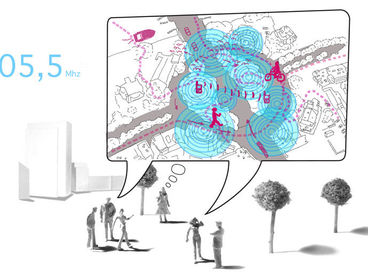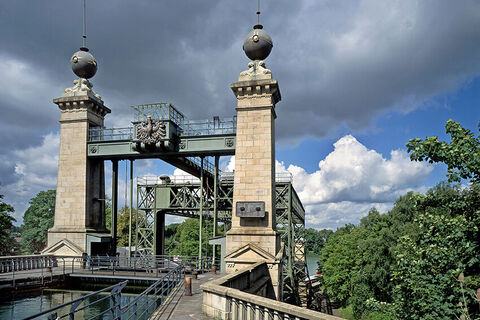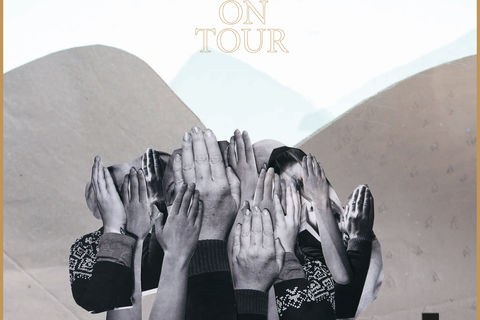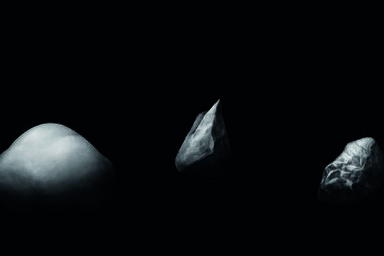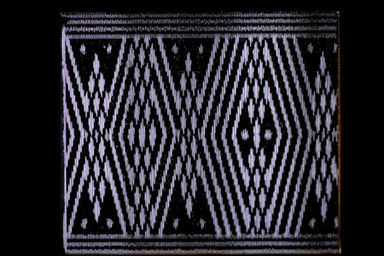Hybrid Space at the Tschumi-Pavilion
06. September - 19. Oktober
Tschumi-Pavillon; Hereplein, Groningen Carsten Goertz, David Hahlbrock, Nicolas Rivet:
“Watching the days go by…”
06.09.-18.09.2008 Andreas Muxel, Martin Hesselmeier:
“Capacitive Body”
21.09.-27.09.2008 Keiko Takahashi, Johannes Amorosa:
“A piece of heaven”
1.10.-07.10.2008 David Hahlbrock:
“around the corner"
10.10.-19.10.2008 www.tschumipaviljoen.org www.noorderzon.nl
06. September - 19. Oktober
Tschumi-Pavillon; Hereplein, Groningen Carsten Goertz, David Hahlbrock, Nicolas Rivet:
“Watching the days go by…”
06.09.-18.09.2008 Andreas Muxel, Martin Hesselmeier:
“Capacitive Body”
21.09.-27.09.2008 Keiko Takahashi, Johannes Amorosa:
“A piece of heaven”
1.10.-07.10.2008 David Hahlbrock:
“around the corner"
10.10.-19.10.2008 www.tschumipaviljoen.org www.noorderzon.nl
Themen
Themen
- Ausstellungen / Kunst
- Auszeichnungen
- Bibliothek
- Diskussion / Vorträge
- edition KHM
- Festivals
- FG exMedia
- FG Film und TV
- FG Kunst
- FG Kunst- und Medienwissenschaften
- Film-/Videovorführungen
- Glasmoog Books
- Glasmoog - Raum für Kunst und Diskurs
- KHM Journal
- Konzerte / Performances / Soundart
- Kooperationen
- LAB Jahrbuch
- LECTURE Reihe
- Lehrende woanders
- Literatur
- off topic
- Pressemitteilungen
- Publikationen
- Stellenanzeigen
- Studium
- TV-Ausstrahlungen
- Veranstaltungen
- alle
Hybrid Space goes Tschumi
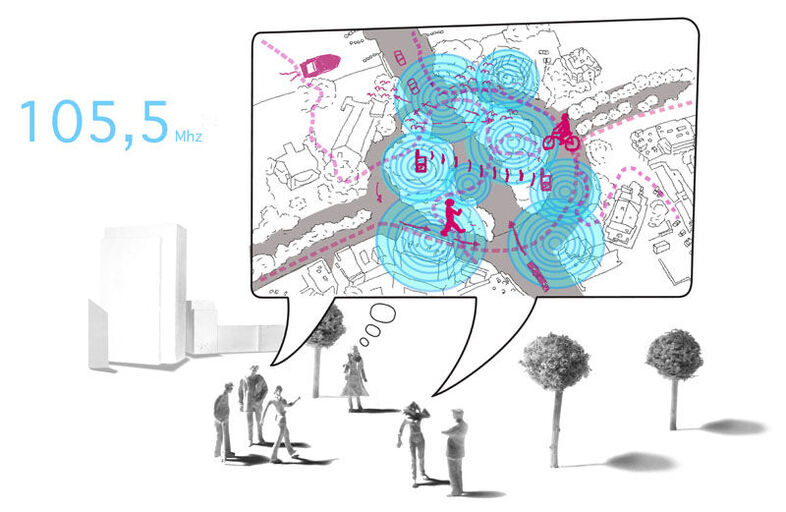
Der Hybrid-Raum der KHM präsentiert vom 06. September bis 19. Oktober Projekte im Tschumi-Pavillon im niederländischen Groningen
06.09.08 - 19.10.08
Tschumi Pavillon, Groningen
Niederlande
Tschumi Pavillon, Groningen
Niederlande
please scroll down for english version
Unter der Führung von Prof. Frans Vogelaar aus der Fächergruppe Mediengestaltung an der Kunsthochschule für Medien Köln präsentieren sechs Studierende im Tschumi-Pavilion im niederländischen Groningen ihre Arbeiten und Installationen. Die Abteilung für Hybrid Space der KHM ist weltweit die erste dieser Art. Architekten, Stadtplaner, Designer und Medienkünstler arbeiten hier mit Soft- und Hardwaretechnikern an der Entwicklung von Projekten für kombinierte, analoge und digitale, architektonisch-urbane Design- und Medienräume. Research and Development thematisieren sowohl urbane Mobilitäts-
Netzwerk-Maßstäbe als auch Innenarchitektur, 1:1 industrielle Design-Awendungen und Wearables. Die Ausstellung beinhaltet Installationen der Studenten Carsten Goertz, David Hahlbrock, Nicolas Rivet (“Watching the days go by…”), Andreas Muxel und Martin Hesselmeier (“Capacitive Body”), David Hahlbrock (“around the corner") und Keiko Takahashi (“A piece of heaven”). Die in Groningen gezeigten Installationen wurden speziell für den Tschumi-Pavillon und seine Umgebung angefertigt, um den Raum dieses wunderschönen und einzigartigen Medien-Pavillons und seine Lage im öffentlichen Raum der Stadt zu thematisieren.
Nicolas Rivet, Carsten Goertz, David Hahlbrock: watching the days go by...
Can a modern architecture also be haunted? Where do the phantoms hide if the thickness and the moisture of the walls of the castles of yesteryear are replaced by the fine partitions of plaster and glass? What are the shapes of its spectra? (P. Rahm) … ist eine Untersuchung dynamischer Räume, die von Temperatur und Licht in, um und durch die städtische Architektur konstituiert sind. Von Sensoren gesteuerte Nebelmaschinen sowie Videoprojektionen werden als Forschungsgerät eingesetzt. Die offenen Ecken und das Bodengitter des Pavilions schaffen einen osmotischen, unsichtbaren Austausch zwischen dem Gebäude und seiner Umgebung. Der aus den Maschinen kommende Nebel erzeugt ein dynamisches, wolkiges Feld, das von den Lichtverhältnissen im Pavilion angetrieben wird. Die verschiedenen Lichtsituationen generieren eine kontinuierliche Bewegung während der Tag verstreicht. Nach Sonnenuntergang fliesst das Licht der Videoprojektionen durch die Architektur und verdichtet die transparente Struktur des Pavilions. Die Projektionen zeigen bewegte, geometrische Konstruktionen, ausgehend von einer Simulation des Laufes der Sonne um den Pavilion. Dieses Flickwerk verschiedener architektonischer Perspektiven, die auf die Architektur selbst projiziert sind, zeichnet das Gebäude als eine momenthafte Konstruktion. Während sich die simulierte Sonne bewegt entfalten sich die Videobeams im Nebel und vielfache Muster entstehen. Die Bewegung des Lichtes betont die dynamische Beschaffenheit des pavilions und erzeugt ephemere, architektonische Formen und spektrale Felder von Nebel und Licht. Nicolas Rivet erhielt 2007 an der Villa Arson, der Akademie für Kunst und Forschung im französischen Nizza, sein Kunstdiplom. Seitdem arbeitet er als Kunstforscher mit rechenbetontem Licht, das auf dem jeweiligen ortsspezifischen Kontext beruht. Dabei spielt er mit dem sensiblen, beinahe sichtbaren Elementen der Architektur. Er war Teil mehrer Gruppenausstellungen in Europa und ist Student im Postgraduiertenstudium an der KHM. Carsten Goertz wurde 1981 in Erkelenz, Deutschland, geboren. Er studiert Multimedia-Produktion (SAE-Diplom) und Audiovisuelle Medien an der KHM. Sein Fokus liegt auf experimentellem algorithmischen Design, Echtzeit-Performance und Projektionen. Seit 2002 gibt er Lesungen und veranstaltet Workshops zu Echtzeit-Visualisierung an mehreren deutschen und ausländischen Universitäten, seit 2003 tritt er audiovisuell auf und stellt auf internationaler Ebene aus. David Hahlbrock wurde 1980 in Koblenz geboren. Er studierte Geschichte und Architekturgeschichte / Kunstwissenschaft an der Technischen Universität Berlin. Seit 2005 studiert er audiovisuelle Medien an der KHM.
Andreas Muxel und Martin Hesselmeier: Capacitive Body
Für „Capacative Body“ wird die Glasschale des Tschumi-Pavilions als Membran verwendet, um seine direkte Umgebung zu erfassen. Durch den Gebrauch mehrerer am Glas befestigter piezoelektrischer Sensoren konnte eine Vielzahl von verschiedenen Frequenzen aus der Außenwelt auf analoge Art und Weise gesammelt werden. Jeder der Sensoren ist mit einer ultrahellen Lichtschnur verbunden, deren Intensität von der Lautstärke der Messungen kontrolliert wird. Die Schnüre im Gebäude bilden eine komplexe räumliche Struktur, in der dem Beobachter kein bestimmter Blickwinkel vorgeschrieben wird. Die Lichtstruktur des Innenraums wird von den gesammelten Mustern seiner Außenwelt in einer direkten, aber unvorhersehbaren Art beeinflusst. Andreas Muxel erhielt 2003 sein Diplom in Medienkommunikationsdesign an der Fachhochschule von Vorarlberg. Seitdem arbeitet er als Interaktionsdesigner und Multimediaentwickler. 2008 beendete er sein Postgraduiertenstudium an der Kunsthochschule für Medien Köln (KHM). Martin Hesselmeier machte 2002 an der an der Fachhochschule Mannheim sein Diplom in Kommunikationsdesign. Seitdem arbeitet er als Designer für mehrere Design-Studios in Deutschland. 2007 beendete er sein Postgraduiertenstudium an der Kunsthochschule für Medien Köln (KHM). 2008 erhielt er den Spiridon-Neven-DuMont-Preis der Kunsthochschule für Medien Köln (KHM).
Keiko Takahashi, Johannes Amorosa: A piece of heaven
“A piece of heaven” schneidet ein Stück aus dem Himmel und stellt es in den Tschumi-Pavilion. Viele Entenfedern werden in den Tschumi-Pavilion gebracht, mehrere Ventilatoren werden am Boden und an den Wänden befestigt. Mithilfe der Ventilatoren zirkulieren die vielen Federn durch die Luft. Es ist, als ob jemand ein Stück aus dem Himmel nimmt und in den Tschumi-Pavilion bringt. Keiko Takahashi ist Medienkünstlerin. Ihre Werke wurden international in Gallerien, auf Festivals und in Museen ausgestellt. Ihre Auszeichnungen sind unter anderem der Prix Ars Electronica 2001, der 5. Und 10. Japan Media Festival und der Siggraph 2003. Sie erhielt eine Mitgliedschaft im Auslandstudienprogramm für Künstler der Japanischen Regierung (2007 – 2008) und ist derzeit Studentin im Postgraduiertenstudium Audiovisuelle Medien an der KHM. J. Amorosa kommt aus München, Sendling, geboren 1978. Er studiert Kunst an der KHM in Köln. In seiner Freizeit geht er Jagen und Fischen.
David Hahlbrock: around the corner - eine Hörspiel-Radio-Installation im öffentlichen Raum
Die nonlineare Hörspiel-Installation “around the corner” wird von acht Radiotransmittern (10-50 Meter Sendeleistung) am Hereplein-Kreisverkehr in der Innenstadt von Groningen au der Radiofrequenz 105,5 Mhz gesendet. Die ortsspezifische Installation behandelt die Entstehung und Verbreitung von Wahrheitskonstruktionen in der Stadt. Das nonlineare Hörspiel entfaltet seine Erzählung durch Spekulationen und Beobachtungen verschiedener Menschen in städtischen Situationen. Die Zuhörer erfahren das Hörspiel indem sie sich mit mobilen Radioempfängern (z.B. in Autos, Mobiltelefonen, tragbare Radios) durch den Sendebereich der acht Radiostationen bewegen. Die Installation referenziert die theoretischen Betrachtungen Bernhard Tschumis über Architektur, Urbanismus und Kino und erweitert sie um das Moment des Gartens. David Hahlbrock wurde 1980 in Koblenz geboren. Er studierte Geschichte und Architekturgeschichte/Kunstwissenschaft an der Technischen Universität Berlin. Seit 2005 studiert er audiovisuelle Medien an der KHM. Für mehr Information und die genaue Sendefrequenz siehe: www.around-the-corner.info
The Department of Hybrid Space at the Academy of Media Arts Cologne (KHM) present projects at the Tschumi Pavilion in Groningen, The Netherlands.
From the 21-08-2008 until the 09-10-2008 the work of the Hybrid Space Department of the Academy of Media Arts Cologne (KHM) under the guidance of Prof. Frans Vogelaar will be presented at the Tschumi Pavilion in Groningen, The Netherlands.
The Department of Hybrid Space at the Academy of Media Arts Cologne (KHM) is the first one worldwide. There, architects, urbanists, designers and media artists collaborate with soft- and hardware engineers in the development of projects for combined analog and digital urban, architectural, design and media spaces. The scope of the research and development projects ranges from those on the urban scale and the scale of the mobility networks to architectural interiors and 1:1 industrial design applications and wearables.
The installations presented in Groningen have been specially created for the Tschumi Pavilion, addressing the space of this beautiful and unique media pavilion and its embedment in the public space of the city. The show includes performances by the fellow Suguru Goto (“Augmented Body and Virtual Body”) and installations of the students Carsten Goertz & David Hahlbrock ("watching the days go by..."), Andreas Muxel & Martin Hesselmeier ("capacitive body"), Nicolas Rivet ("UNTITLED*"), David Hahlbrock (“around the corner") and Keiko Takahashi ("A piece of heaven").
The event is being curated by Marinus de Vries (Tschumi Pavilion Foundation); the technical support is provided by Martin Nawrath and Bernd Voss (KHM).
Nicolas Rivet, Carsten Goertz, David Hahlbrock: watching the days go by... Can a modern architecture also be haunted? Where do the phantoms hide if the thickness and the moisture of the walls of the castles of yesteryear are replaced by the fine partitions of plaster and glass? What are the shapes of its spectra? (P. Rahm)
“watching the days go by...”
...is a research on dynamic spaces created by temperature and light within, around and through the citie`s architecture, exemplified at the Tschumi Pavilion. Fog machines controlled by light sensors, which are attached to the building,and video projections are used as a research tool.At the Pavilion the open edges and the floor-mesh cause an osmotic, invisible exchange between the building and its surrounding. The fog coming out of the machines generates a dynamic, cloudy field, in accordance to the actual distribution of light in the pavilion.
During the day the several alterations of light and temperature produce a continuous
flux of movement. After sunset, the light of the projectors flows through the architecture, densifying the pavilions transparent structure. The projection shows geometric shapes in motion based on simulation of the suns daily movement around the pavilion. It is a patchwork of different perspectives of the architecture projected onto itself, representing the pavilion as a construction of temporalities. As the simulated sun moves, the light-beams unfold in the fog, and out of multiple perspectives onto the pavilions structure the projected patterns emerge. The motion of the light emphasises the dynamic structure of the pavilion and generates immaterial architectonic forms and spectral areas of fog and light.
Carsten Goertz was born 1981 in Erkelenz in Germany. Studies in Multimedia-Production (SAE Diploma) and Audiovisual Media at the Academy of Media Arts Cologne (KHM). Focus on experimental algorithmic design, real-time-performance and projections. Lecturing and giving workshops on real-time-visualization at several universities in Germany and abroad since 2002, Audio-visually performing and exhibiting broadly international since 2003.
David Hahlbrock was born 1980 in Koblenz in Germany. He studied History and Art History at the Technical University Berlin. Since 2005 he's a student in Audiovisual Media at the Academy of Media Arts Cologne (KHM). Since 2006 he participated in several international group exhibitions around Europe.
In 2007, Nicolas Rivet received a Diploma in Art from the Villla Arson, Academy of Art and Research in Nice, France. Since then he has been working as an art researcher with computational light based on site-specific context, playing with the sensitive, nearly visible territory of architecture. He was part of several group exhibitions around Europe, he is a postgraduate student at the Academy of Media Arts Cologne (KHM).
Andreas Muxel and Martin Hesselmeier: Capacitive body
For “Capacitive body” the glass shell of the Tschumi Pavilion is used as a membrane to sense its direct environment. Through the use of several piezoelectric sensors attached to the glass a wide range of different frequencies from the outer world could be collected in an analogue way.
Each of the sensor is connected to a ultra-bright light rope whose intensity is controlled by the amplitude of the measurement. The ropes inside the pavilion build a complex spatial structure in which no point of view is proposed to the observer of the system. The light structure of the inner space is influenced by the collected patterns of its environment in a direct but unpredictable way.
In 2003 Andreas Muxel received a Diploma in Media Communication Design from the University of Applied Sciences Vorarlberg, Austria and has since been working as an interaction designer and multimedia developer. In 2008 he finished his postgraduate studies at the Academy of Media Arts Cologne (KHM). As a media artist he was part of several group exhibitions in Europe and the United States of America.
In 2002 Martin Hesselmeier received a Diploma in Communication Design from the Mannheim University of Applied Sciences in Germany and has since been working as a designer for various design studios in Germany. In 2007 he finished his postgraduate studies at the Academy of Media Ars Cologne (KHM). As a media artist he was part of several group exhibitions around the world and in 2008 received the Spiridon Neven- DuMont Award of the Academy of Media Arts Cologne (KHM)
Keiko Takahashi and Johannes Amorosa: A piece of heaven
“A piece of heaven” cuts out a piece of heaven and packs it in the Tschumi Pavilion.
Abundant ducks feathers are contained in the Tschumi Pavilion, several fans are installed on the floor and walls. With help of the fans, abundant feathers are floating and circulating in the air. It is as if someone takes a piece of heaven and packs it in the Tschumi Pavilion.
Keiko Takahashi is a media artist. Her works have been exhibited at galleries, festivals, and museums internationally. Awards include Prix Ars Electronica 2001, the 5th and 10th Japan Media Festival, and Siggraph 2003. She received a fellowship from the Japanese Government Overseas Study Program for Artists (2007-2008) and is currently a postgraduate student at the Academy of Media Arts Cologne (KHM) in Germany. J. Amorosa was born 1978 in Munich. He is studying Art at the KHM in Cologne, Eau.
David Hahlbrock: around the corner – a radio play installation in public space
"around the corner" is a non linear radio play installation in public space. It's transmitted by eight small range radio stations at the Hereplein roundabout in the city center of Groningen on the frequency 105,5 Mhz. The sitespecific installation deals with the construction of truth in the city. The nonlinear radio play unfolds its narrative by observations and speculations made by several people in urban situations. The audience perceives the radio play by moving with radio receivers (e.g. in mobile phones, car radio, portable radio) in the terrain of the eight radio fields. The installation references Bernhardt Tschumis theoretical work about architecture, urbanism and cinema and expands them with a view on the garden. For more Information see: www.around-the-corner.info
David Hahlbrock was born 1980 in Koblenz in Germany. He studied History and Art History at the Technical University Berlin. Since 2005 he's a student in Audiovisual Media at the Academy of Media Arts Cologne (KHM). Since 2006 he participated in several international group exhibitions around Europe.
Unter der Führung von Prof. Frans Vogelaar aus der Fächergruppe Mediengestaltung an der Kunsthochschule für Medien Köln präsentieren sechs Studierende im Tschumi-Pavilion im niederländischen Groningen ihre Arbeiten und Installationen. Die Abteilung für Hybrid Space der KHM ist weltweit die erste dieser Art. Architekten, Stadtplaner, Designer und Medienkünstler arbeiten hier mit Soft- und Hardwaretechnikern an der Entwicklung von Projekten für kombinierte, analoge und digitale, architektonisch-urbane Design- und Medienräume. Research and Development thematisieren sowohl urbane Mobilitäts-
Netzwerk-Maßstäbe als auch Innenarchitektur, 1:1 industrielle Design-Awendungen und Wearables. Die Ausstellung beinhaltet Installationen der Studenten Carsten Goertz, David Hahlbrock, Nicolas Rivet (“Watching the days go by…”), Andreas Muxel und Martin Hesselmeier (“Capacitive Body”), David Hahlbrock (“around the corner") und Keiko Takahashi (“A piece of heaven”). Die in Groningen gezeigten Installationen wurden speziell für den Tschumi-Pavillon und seine Umgebung angefertigt, um den Raum dieses wunderschönen und einzigartigen Medien-Pavillons und seine Lage im öffentlichen Raum der Stadt zu thematisieren.
Nicolas Rivet, Carsten Goertz, David Hahlbrock: watching the days go by...
Can a modern architecture also be haunted? Where do the phantoms hide if the thickness and the moisture of the walls of the castles of yesteryear are replaced by the fine partitions of plaster and glass? What are the shapes of its spectra? (P. Rahm) … ist eine Untersuchung dynamischer Räume, die von Temperatur und Licht in, um und durch die städtische Architektur konstituiert sind. Von Sensoren gesteuerte Nebelmaschinen sowie Videoprojektionen werden als Forschungsgerät eingesetzt. Die offenen Ecken und das Bodengitter des Pavilions schaffen einen osmotischen, unsichtbaren Austausch zwischen dem Gebäude und seiner Umgebung. Der aus den Maschinen kommende Nebel erzeugt ein dynamisches, wolkiges Feld, das von den Lichtverhältnissen im Pavilion angetrieben wird. Die verschiedenen Lichtsituationen generieren eine kontinuierliche Bewegung während der Tag verstreicht. Nach Sonnenuntergang fliesst das Licht der Videoprojektionen durch die Architektur und verdichtet die transparente Struktur des Pavilions. Die Projektionen zeigen bewegte, geometrische Konstruktionen, ausgehend von einer Simulation des Laufes der Sonne um den Pavilion. Dieses Flickwerk verschiedener architektonischer Perspektiven, die auf die Architektur selbst projiziert sind, zeichnet das Gebäude als eine momenthafte Konstruktion. Während sich die simulierte Sonne bewegt entfalten sich die Videobeams im Nebel und vielfache Muster entstehen. Die Bewegung des Lichtes betont die dynamische Beschaffenheit des pavilions und erzeugt ephemere, architektonische Formen und spektrale Felder von Nebel und Licht. Nicolas Rivet erhielt 2007 an der Villa Arson, der Akademie für Kunst und Forschung im französischen Nizza, sein Kunstdiplom. Seitdem arbeitet er als Kunstforscher mit rechenbetontem Licht, das auf dem jeweiligen ortsspezifischen Kontext beruht. Dabei spielt er mit dem sensiblen, beinahe sichtbaren Elementen der Architektur. Er war Teil mehrer Gruppenausstellungen in Europa und ist Student im Postgraduiertenstudium an der KHM. Carsten Goertz wurde 1981 in Erkelenz, Deutschland, geboren. Er studiert Multimedia-Produktion (SAE-Diplom) und Audiovisuelle Medien an der KHM. Sein Fokus liegt auf experimentellem algorithmischen Design, Echtzeit-Performance und Projektionen. Seit 2002 gibt er Lesungen und veranstaltet Workshops zu Echtzeit-Visualisierung an mehreren deutschen und ausländischen Universitäten, seit 2003 tritt er audiovisuell auf und stellt auf internationaler Ebene aus. David Hahlbrock wurde 1980 in Koblenz geboren. Er studierte Geschichte und Architekturgeschichte / Kunstwissenschaft an der Technischen Universität Berlin. Seit 2005 studiert er audiovisuelle Medien an der KHM.
Andreas Muxel und Martin Hesselmeier: Capacitive Body
Für „Capacative Body“ wird die Glasschale des Tschumi-Pavilions als Membran verwendet, um seine direkte Umgebung zu erfassen. Durch den Gebrauch mehrerer am Glas befestigter piezoelektrischer Sensoren konnte eine Vielzahl von verschiedenen Frequenzen aus der Außenwelt auf analoge Art und Weise gesammelt werden. Jeder der Sensoren ist mit einer ultrahellen Lichtschnur verbunden, deren Intensität von der Lautstärke der Messungen kontrolliert wird. Die Schnüre im Gebäude bilden eine komplexe räumliche Struktur, in der dem Beobachter kein bestimmter Blickwinkel vorgeschrieben wird. Die Lichtstruktur des Innenraums wird von den gesammelten Mustern seiner Außenwelt in einer direkten, aber unvorhersehbaren Art beeinflusst. Andreas Muxel erhielt 2003 sein Diplom in Medienkommunikationsdesign an der Fachhochschule von Vorarlberg. Seitdem arbeitet er als Interaktionsdesigner und Multimediaentwickler. 2008 beendete er sein Postgraduiertenstudium an der Kunsthochschule für Medien Köln (KHM). Martin Hesselmeier machte 2002 an der an der Fachhochschule Mannheim sein Diplom in Kommunikationsdesign. Seitdem arbeitet er als Designer für mehrere Design-Studios in Deutschland. 2007 beendete er sein Postgraduiertenstudium an der Kunsthochschule für Medien Köln (KHM). 2008 erhielt er den Spiridon-Neven-DuMont-Preis der Kunsthochschule für Medien Köln (KHM).
Keiko Takahashi, Johannes Amorosa: A piece of heaven
“A piece of heaven” schneidet ein Stück aus dem Himmel und stellt es in den Tschumi-Pavilion. Viele Entenfedern werden in den Tschumi-Pavilion gebracht, mehrere Ventilatoren werden am Boden und an den Wänden befestigt. Mithilfe der Ventilatoren zirkulieren die vielen Federn durch die Luft. Es ist, als ob jemand ein Stück aus dem Himmel nimmt und in den Tschumi-Pavilion bringt. Keiko Takahashi ist Medienkünstlerin. Ihre Werke wurden international in Gallerien, auf Festivals und in Museen ausgestellt. Ihre Auszeichnungen sind unter anderem der Prix Ars Electronica 2001, der 5. Und 10. Japan Media Festival und der Siggraph 2003. Sie erhielt eine Mitgliedschaft im Auslandstudienprogramm für Künstler der Japanischen Regierung (2007 – 2008) und ist derzeit Studentin im Postgraduiertenstudium Audiovisuelle Medien an der KHM. J. Amorosa kommt aus München, Sendling, geboren 1978. Er studiert Kunst an der KHM in Köln. In seiner Freizeit geht er Jagen und Fischen.
David Hahlbrock: around the corner - eine Hörspiel-Radio-Installation im öffentlichen Raum
Die nonlineare Hörspiel-Installation “around the corner” wird von acht Radiotransmittern (10-50 Meter Sendeleistung) am Hereplein-Kreisverkehr in der Innenstadt von Groningen au der Radiofrequenz 105,5 Mhz gesendet. Die ortsspezifische Installation behandelt die Entstehung und Verbreitung von Wahrheitskonstruktionen in der Stadt. Das nonlineare Hörspiel entfaltet seine Erzählung durch Spekulationen und Beobachtungen verschiedener Menschen in städtischen Situationen. Die Zuhörer erfahren das Hörspiel indem sie sich mit mobilen Radioempfängern (z.B. in Autos, Mobiltelefonen, tragbare Radios) durch den Sendebereich der acht Radiostationen bewegen. Die Installation referenziert die theoretischen Betrachtungen Bernhard Tschumis über Architektur, Urbanismus und Kino und erweitert sie um das Moment des Gartens. David Hahlbrock wurde 1980 in Koblenz geboren. Er studierte Geschichte und Architekturgeschichte/Kunstwissenschaft an der Technischen Universität Berlin. Seit 2005 studiert er audiovisuelle Medien an der KHM. Für mehr Information und die genaue Sendefrequenz siehe: www.around-the-corner.info
The Department of Hybrid Space at the Academy of Media Arts Cologne (KHM) present projects at the Tschumi Pavilion in Groningen, The Netherlands.
From the 21-08-2008 until the 09-10-2008 the work of the Hybrid Space Department of the Academy of Media Arts Cologne (KHM) under the guidance of Prof. Frans Vogelaar will be presented at the Tschumi Pavilion in Groningen, The Netherlands.
The Department of Hybrid Space at the Academy of Media Arts Cologne (KHM) is the first one worldwide. There, architects, urbanists, designers and media artists collaborate with soft- and hardware engineers in the development of projects for combined analog and digital urban, architectural, design and media spaces. The scope of the research and development projects ranges from those on the urban scale and the scale of the mobility networks to architectural interiors and 1:1 industrial design applications and wearables.
The installations presented in Groningen have been specially created for the Tschumi Pavilion, addressing the space of this beautiful and unique media pavilion and its embedment in the public space of the city. The show includes performances by the fellow Suguru Goto (“Augmented Body and Virtual Body”) and installations of the students Carsten Goertz & David Hahlbrock ("watching the days go by..."), Andreas Muxel & Martin Hesselmeier ("capacitive body"), Nicolas Rivet ("UNTITLED*"), David Hahlbrock (“around the corner") and Keiko Takahashi ("A piece of heaven").
The event is being curated by Marinus de Vries (Tschumi Pavilion Foundation); the technical support is provided by Martin Nawrath and Bernd Voss (KHM).
Nicolas Rivet, Carsten Goertz, David Hahlbrock: watching the days go by... Can a modern architecture also be haunted? Where do the phantoms hide if the thickness and the moisture of the walls of the castles of yesteryear are replaced by the fine partitions of plaster and glass? What are the shapes of its spectra? (P. Rahm)
“watching the days go by...”
...is a research on dynamic spaces created by temperature and light within, around and through the citie`s architecture, exemplified at the Tschumi Pavilion. Fog machines controlled by light sensors, which are attached to the building,and video projections are used as a research tool.At the Pavilion the open edges and the floor-mesh cause an osmotic, invisible exchange between the building and its surrounding. The fog coming out of the machines generates a dynamic, cloudy field, in accordance to the actual distribution of light in the pavilion.
During the day the several alterations of light and temperature produce a continuous
flux of movement. After sunset, the light of the projectors flows through the architecture, densifying the pavilions transparent structure. The projection shows geometric shapes in motion based on simulation of the suns daily movement around the pavilion. It is a patchwork of different perspectives of the architecture projected onto itself, representing the pavilion as a construction of temporalities. As the simulated sun moves, the light-beams unfold in the fog, and out of multiple perspectives onto the pavilions structure the projected patterns emerge. The motion of the light emphasises the dynamic structure of the pavilion and generates immaterial architectonic forms and spectral areas of fog and light.
Carsten Goertz was born 1981 in Erkelenz in Germany. Studies in Multimedia-Production (SAE Diploma) and Audiovisual Media at the Academy of Media Arts Cologne (KHM). Focus on experimental algorithmic design, real-time-performance and projections. Lecturing and giving workshops on real-time-visualization at several universities in Germany and abroad since 2002, Audio-visually performing and exhibiting broadly international since 2003.
David Hahlbrock was born 1980 in Koblenz in Germany. He studied History and Art History at the Technical University Berlin. Since 2005 he's a student in Audiovisual Media at the Academy of Media Arts Cologne (KHM). Since 2006 he participated in several international group exhibitions around Europe.
In 2007, Nicolas Rivet received a Diploma in Art from the Villla Arson, Academy of Art and Research in Nice, France. Since then he has been working as an art researcher with computational light based on site-specific context, playing with the sensitive, nearly visible territory of architecture. He was part of several group exhibitions around Europe, he is a postgraduate student at the Academy of Media Arts Cologne (KHM).
Andreas Muxel and Martin Hesselmeier: Capacitive body
For “Capacitive body” the glass shell of the Tschumi Pavilion is used as a membrane to sense its direct environment. Through the use of several piezoelectric sensors attached to the glass a wide range of different frequencies from the outer world could be collected in an analogue way.
Each of the sensor is connected to a ultra-bright light rope whose intensity is controlled by the amplitude of the measurement. The ropes inside the pavilion build a complex spatial structure in which no point of view is proposed to the observer of the system. The light structure of the inner space is influenced by the collected patterns of its environment in a direct but unpredictable way.
In 2003 Andreas Muxel received a Diploma in Media Communication Design from the University of Applied Sciences Vorarlberg, Austria and has since been working as an interaction designer and multimedia developer. In 2008 he finished his postgraduate studies at the Academy of Media Arts Cologne (KHM). As a media artist he was part of several group exhibitions in Europe and the United States of America.
In 2002 Martin Hesselmeier received a Diploma in Communication Design from the Mannheim University of Applied Sciences in Germany and has since been working as a designer for various design studios in Germany. In 2007 he finished his postgraduate studies at the Academy of Media Ars Cologne (KHM). As a media artist he was part of several group exhibitions around the world and in 2008 received the Spiridon Neven- DuMont Award of the Academy of Media Arts Cologne (KHM)
Keiko Takahashi and Johannes Amorosa: A piece of heaven
“A piece of heaven” cuts out a piece of heaven and packs it in the Tschumi Pavilion.
Abundant ducks feathers are contained in the Tschumi Pavilion, several fans are installed on the floor and walls. With help of the fans, abundant feathers are floating and circulating in the air. It is as if someone takes a piece of heaven and packs it in the Tschumi Pavilion.
Keiko Takahashi is a media artist. Her works have been exhibited at galleries, festivals, and museums internationally. Awards include Prix Ars Electronica 2001, the 5th and 10th Japan Media Festival, and Siggraph 2003. She received a fellowship from the Japanese Government Overseas Study Program for Artists (2007-2008) and is currently a postgraduate student at the Academy of Media Arts Cologne (KHM) in Germany. J. Amorosa was born 1978 in Munich. He is studying Art at the KHM in Cologne, Eau.
David Hahlbrock: around the corner – a radio play installation in public space
"around the corner" is a non linear radio play installation in public space. It's transmitted by eight small range radio stations at the Hereplein roundabout in the city center of Groningen on the frequency 105,5 Mhz. The sitespecific installation deals with the construction of truth in the city. The nonlinear radio play unfolds its narrative by observations and speculations made by several people in urban situations. The audience perceives the radio play by moving with radio receivers (e.g. in mobile phones, car radio, portable radio) in the terrain of the eight radio fields. The installation references Bernhardt Tschumis theoretical work about architecture, urbanism and cinema and expands them with a view on the garden. For more Information see: www.around-the-corner.info
David Hahlbrock was born 1980 in Koblenz in Germany. He studied History and Art History at the Technical University Berlin. Since 2005 he's a student in Audiovisual Media at the Academy of Media Arts Cologne (KHM). Since 2006 he participated in several international group exhibitions around Europe.
Hybrid Space at the Tschumi-Pavilion
06. September - 19. Oktober
Tschumi-Pavillon; Hereplein, Groningen Carsten Goertz, David Hahlbrock, Nicolas Rivet:
“Watching the days go by…”
06.09.-18.09.2008 Andreas Muxel, Martin Hesselmeier:
“Capacitive Body”
21.09.-27.09.2008 Keiko Takahashi, Johannes Amorosa:
“A piece of heaven”
1.10.-07.10.2008 David Hahlbrock:
“around the corner"
10.10.-19.10.2008 www.tschumipaviljoen.org www.noorderzon.nl
06. September - 19. Oktober
Tschumi-Pavillon; Hereplein, Groningen Carsten Goertz, David Hahlbrock, Nicolas Rivet:
“Watching the days go by…”
06.09.-18.09.2008 Andreas Muxel, Martin Hesselmeier:
“Capacitive Body”
21.09.-27.09.2008 Keiko Takahashi, Johannes Amorosa:
“A piece of heaven”
1.10.-07.10.2008 David Hahlbrock:
“around the corner"
10.10.-19.10.2008 www.tschumipaviljoen.org www.noorderzon.nl
Themen
Themen
- Ausstellungen / Kunst
- Auszeichnungen
- Bibliothek
- Diskussion / Vorträge
- edition KHM
- Festivals
- FG exMedia
- FG Film und TV
- FG Kunst
- FG Kunst- und Medienwissenschaften
- Film-/Videovorführungen
- Glasmoog Books
- Glasmoog - Raum für Kunst und Diskurs
- KHM Journal
- Konzerte / Performances / Soundart
- Kooperationen
- LAB Jahrbuch
- LECTURE Reihe
- Lehrende woanders
- Literatur
- off topic
- Pressemitteilungen
- Publikationen
- Stellenanzeigen
- Studium
- TV-Ausstrahlungen
- Veranstaltungen
- alle



